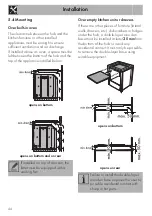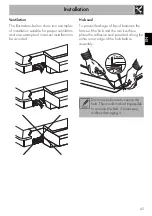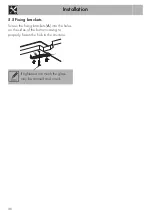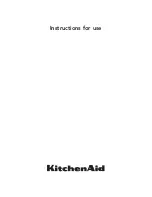
Cleaning and maintenance
39
EN
4 Cleaning and maintenance
4.1 Instructions
4.2 Cleaning the surfaces
To keep the surfaces in good condition,
they should be cleaned regularly after use.
Let them cool first.
4.3 Ordinary weekly cleaning
Clean and maintain the hob once a week
using an ordinary glass cleaning product.
Always follow the manufacturer's
instructions. The silicon in these products
creates a protective, water-repellent
membrane which also resists dirt. All marks
stay on the membrane and can therefore be
removed easily. After cleaning, dry the
surface with a clean cloth. Make sure that
there is no detergent left on the cooking
surface as it will undergo a corrosive
reaction when heated up and could modify
the structure of the cooking surface.
4.4 Food stains or residues
Smudges from aluminium-based pans can
be easily cleaned off with a cloth
dampened in vinegar.
After cooking, remove any burnt residues
with the scraper provided; rinse with water
and dry thoroughly with a clean cloth.
Regular use of the scraper considerably
reduces the need for chemical detergents
for the daily cleaning of the hob.
Dirt
which may have fallen on the hob
while cleaning lettuce or potatoes can
scratch the hob when moving pans.
Consequently, remove any dirt from the
cooking surface immediately.
Improper use
Risk of damage to surfaces
• Do not use steam jets to clean the
appliance.
• Do not spill sugar or sweet mixtures on
the hob during cooking.
• Do not place materials or substances
that could melt (plastic or aluminium foil).
• Keep sensor keys clean at all times and
do not rest any object on them.
• Do not use cleaning products containing
chlorine, ammonia or bleach on steel
parts or parts with metallic finishes on the
surface (e.g. anodizing, nickel- or
chromium-plating).
• Do not use abrasive or corrosive
detergents on glass parts (e.g. powder
products, stain removers and metallic
sponges). Use wooden or plastic
utensils.








































